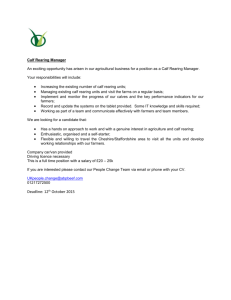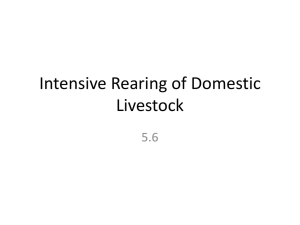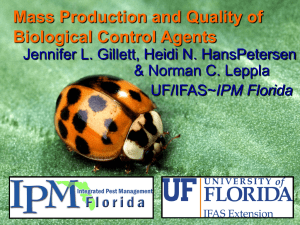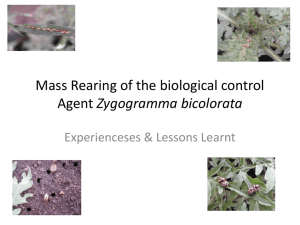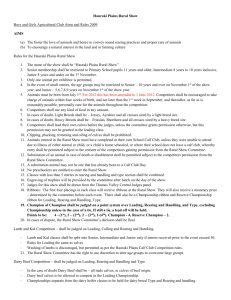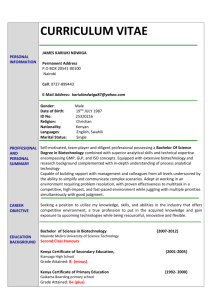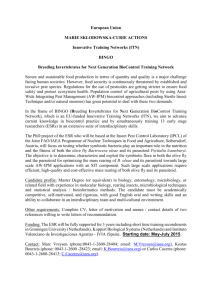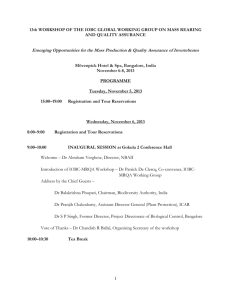Airborne Hazard
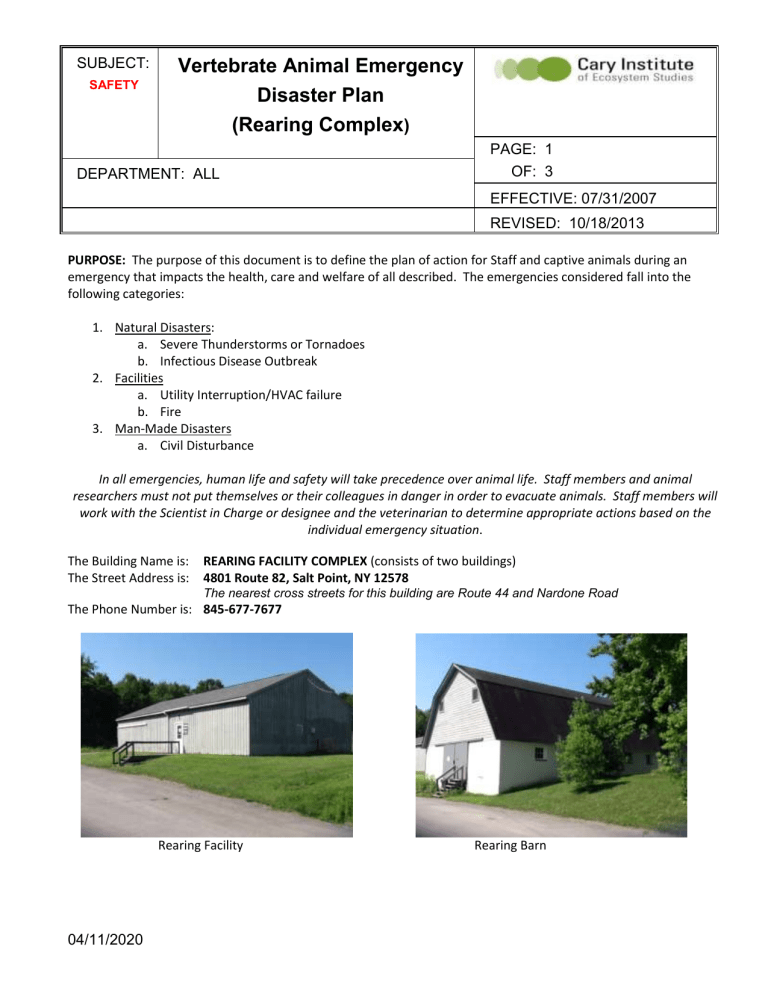
SUBJECT:
SAFETY
Vertebrate Animal Emergency
Disaster Plan
(Rearing Complex )
DEPARTMENT: ALL
PAGE: 1
OF: 3
EFFECTIVE: 07/31/2007
REVISED: 10/18/2013
PURPOSE: The purpose of this document is to define the plan of action for Staff and captive animals during an emergency that impacts the health, care and welfare of all described. The emergencies considered fall into the following categories:
1.
Natural Disasters: a.
Severe Thunderstorms or Tornadoes b.
Infectious Disease Outbreak
2.
Facilities a.
Utility Interruption/HVAC failure b.
Fire
3.
Man-Made Disasters a.
Civil Disturbance
In all emergencies, human life and safety will take precedence over animal life. Staff members and animal researchers must not put themselves or their colleagues in danger in order to evacuate animals. Staff members will work with the Scientist in Charge or designee and the veterinarian to determine appropriate actions based on the
individual emergency situation.
The Building Name is: REARING FACILITY COMPLEX (consists of two buildings)
The Street Address is: 4801 Route 82, Salt Point, NY 12578
The nearest cross streets for this building are Route 44 and Nardone Road
The Phone Number is: 845-677-7677
Rearing Facility Rearing Barn
04/11/2020
SUBJECT:
SAFETY
Vertebrate Animal Emergency
Disaster Plan
(Rearing Complex )
DEPARTMENT: ALL
PAGE: 2
OF: 3
EFFECTIVE: 07/31/2007
REVISED: 10/18/2013
VERTEBRATE FACILITIES:
1.
Rearing Facility has smoke detectors in the following rooms: Room #1, Room #3, hallway and Main Room. In addition there is a carbon monoxide detector on the ceiling near the furnace.
2.
The Rearing Barn has smoke detectors in the following areas: upper level west and lower level center ceiling.
3.
Fire extinguishers in the Rearing Facility are located by each exit.
4.
Fire extinguishers in the Rearing Barn are located at the top of the stairwell (east), bottom of stairwell (west) and on the lower level.
5.
There are two faucet mounted emergency eye wash stations in the Rearing Facility and a portable eye wash unit located in the Rearing Barn when occupied.
6.
A first aid kit is located in each building near the entrance.
EMERGENCY PHONE NUMBERS AND OTHER CONTACT INFORMATION:
Fire Department, Ambulance or Police, press: 9,911
Remain calm, state your emergency clearly, stay on the line until the dispatcher tells you it is OK to hang up, have someone meet the emergency vehicle at the main roadway to the building to direct them to the exact location.
Nearest Hospital: Vassar Hospital – 845.454.8500
Cary Institute Security: 845.224.7275
Manager of Physical Plant and Grounds: Extension Cell Phone 845.224.7274
Veterinarian: Kim Roelke, DVM – 845.677.8800
Poison Control: 800-222-1222
CARY INSTITUTE Emergency Contact #’s: o Rick Ostfeld, Scientist in Charge, 845.677.7600 x136 or 845.797.9047 o Kelly Oggenfuss, Senior Research Specialist 845.883.5340 (home) o Brandt Burgess, IACUC IO/Manager of Grants and Compliance, 845.677.7600 x123 or 805.708.2590 o Sharon Jones, Grants Specialist, 845.677.7600 x108 o Fred Merritt, Manager of Facilities and Grounds, 845.224.7274 o Lau-Rene Manuel, Safety Manager, 845.677.7600 x165 or 845.337.2853 (cell)
04/11/2020
SUBJECT:
SAFETY
Vertebrate Animal Emergency
Disaster Plan
(Rearing Complex )
DEPARTMENT: ALL
PAGE: 3
OF: 3
EFFECTIVE: 07/31/2007
REVISED: 10/18/2013 o Holly Talbot, Comptroller, Assistant Director, 845.677.7600 x200
1.
NATURAL DISASTERS: Additional information on Environmental Health and Safety is available at http://www.ecostudies.org/intranet/safety/index.html
Serious Weather Thunderstorms/Tornadoes (refer to P/I ‘Severe Weather Action Plan’ and the ‘Storm Policy’ for additional information)
Power failures after a servere storm are common and may last for many hours. Electrical generators are available for emergency use and powering of critical equipment. Following a power failure critical equipment and facilities such as environmental chambers, animal rooms, and other devices in the Rearing Facilities will be checked by a research staff member and reported to the Manager of Facilities and Grounds, if animals are in residence.
Opening rooms to fresh air and instituting more frequent water changes may be used to minimize impacts of lack of refrigeration or airflow.
In the event the storm is severe, the Scientist in Charge (SIC) or the Designee will make a determination to whether to ‘release’ the vertebrate back to their original point of capture. In the event that laboratory animals are housed, they will be relocated to a location agreed upon between the SIC and the Research Support Staff.
Infectious Disease
The SIC will consult the Veterinarian to determine the best method of containing and eliminating the threat. Any employees potentially exposed will be sent for medical attention.
2.
FACILITIES:
Utility Interruption/HVAC failure
In the event of a utility interruption, the Manager of Facilities and Grounds, or his representative will be contacted to remedy the situation regarding a repair or the installation of a temporary emergency generator.
Fire
In the event of a fire, the immediate concern is the safety of personnel (refer to the ‘Cary Institute Fire Evacuation
Plan’) to evacuate the building. After all personnel have evacuated, the fire has been extinguished and the Fire
Department approves re-entry animals may be removed. Vertebrate which have been injured will be seen by the veterinarian.
3.
MAN-MADE DISASTERS
Civil Disturbance – In the event of a civil disturbance or intruder intending to do harm, 911 will be contacted immediately to remedy the situation. Any public dissemination of information regarding this matter will be handled through the Communication Office, Lori Quillen Communications Director, 845.677.7600 x233 or
Pamela Freeman, Communications Specialist 845.677.7600 x121.
04/11/2020


